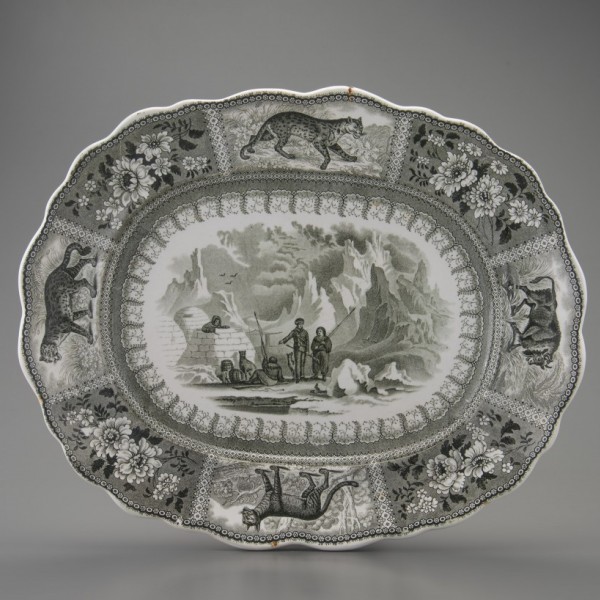

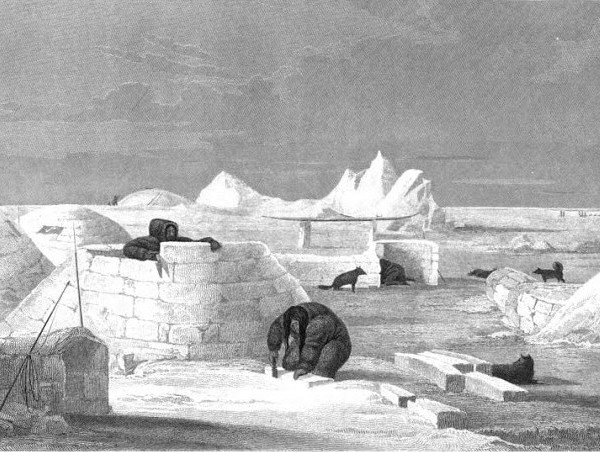
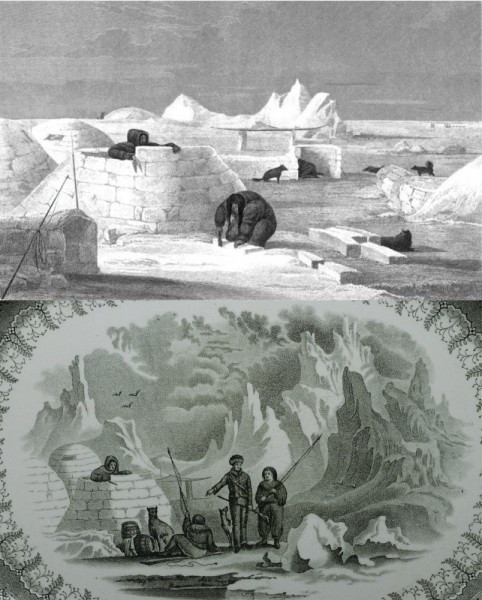
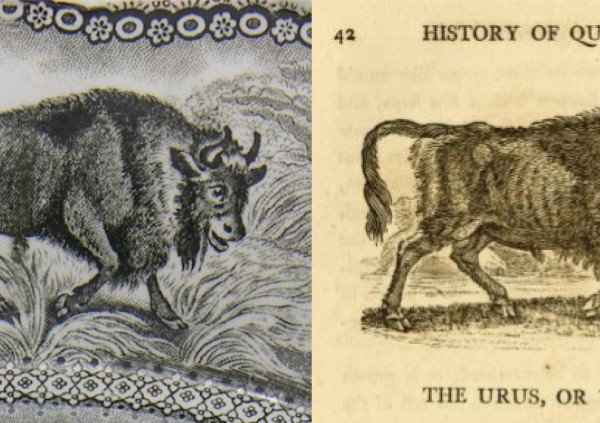

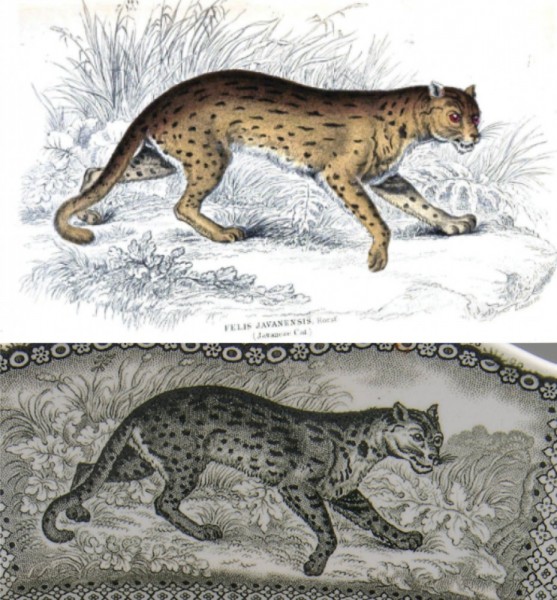









Arctic Scenery Broken
Natalie Wright
But what of the incongruous inclusion of tropical animals and flowers around the edge of the platter? On one hand, it evidences the widespread popularity of early nineteenth century natural history books, most notably those from which the illustrations were borrowed [fig. 5-8]. William Jardine’s Naturalist’s Library (1837) and T. Bewick’s A General History of Quadrupeds (1790) capitalized on the British public’s desire for “exotic” landscapes, animals, and people – a desire that this Staffordshire pottery attempted to capitalize on, as well.
Yet both Jardine’s and Bewick’s volumes also feature images of northern animals such as seals and whales that would have been more appropriate for this table service. It is then possible that the pottery’s engraver or illustrator employed these images to advance “the sun never sets on the British empire” argument, which posits that the British Empire was so expansive that the sun would always shine on British territory. Notably, none of these animals were from British colonized areas at the time of this platter's creation, indicating a confident assertion that all warm climate regions would or could soon be British, and a simultaneous subversion of that assertion.
While in its own time this blurring of geographic boundaries may have been a marketing or imperialist move, today it stands as an increasingly possible and poignant reality, an eerily accurate commentary on climate change in the twenty-first century. The tropical Arctic Scenery imagery could well come to fruition in the decades to come as our climate warms and the ice zones melt.
Once impenetrable and unpredictable ice flows that held Parry and so many others back are today melting and breaking apart. The Northwest Passage will soon be open, and the ramifications for ecosystems are dire. As Inuit activist and author Sheila Watt-Cloutier argues, when the ice melts and cracks, so too will the Inuit identity and community, which rely on traditions and livelihoods that in turn rely on this landscape. As Watt-Cloutier has flagged time and again, these threats of lost cultural identity have today led in some Inuit communities to shockingly high suicide rates, a symptom of what she terms “climate trauma.” When viewed through a contemporary lens, this “curious” nineteenth-century Staffordshire platter takes on new and troubling meaning, drawing attention to contemporary issues that demand resolution and action.
For a map showing the geography of the images used on Chipstone's Arctic Scenery platter, click here.
For more on Sir William Edward Parry, his expeditions, and his methods, click here.
For more on Central Canadian Inuit, the kayaks they make and use, and their hunting traditions, click here.
To see more of Edward Finden's engravings of Sir William Edward Parry's second voyage, click here.
